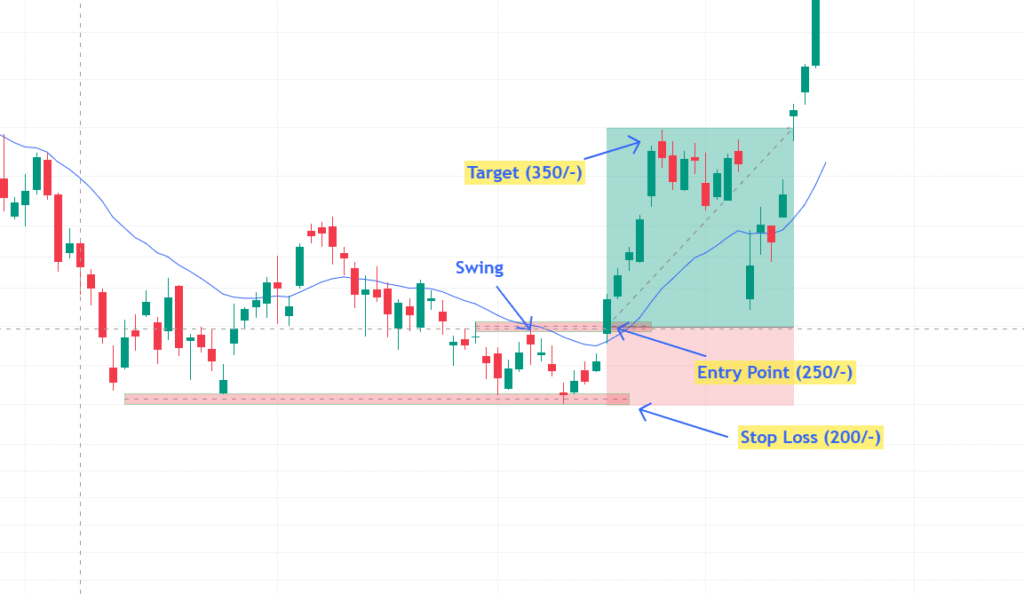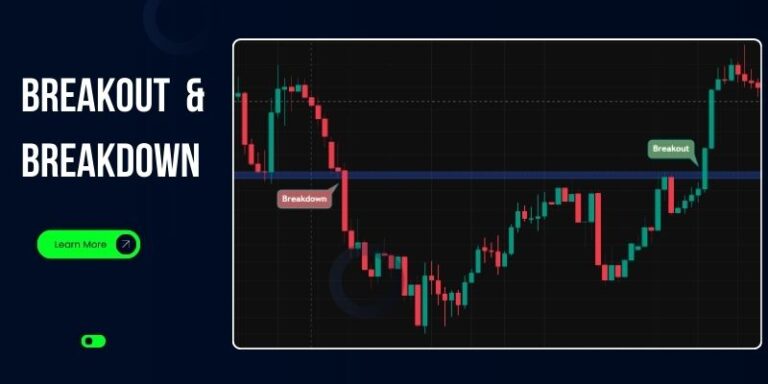What is Swing Trading? Explained with a Simple Example

Introduction to Swing Trading
Swing trading is a trading strategy used by many investors and traders. In which traders hold an asset for a few days or weeks, taking advantage of short-term price fluctuations. But what is swing trading, exactly? It is a trading method that is a trading style between day trading and long-term investing, allowing traders to take advantage of market fluctuations without having to constantly sit at a screen and monitor the markets.
Table of Contents
This approach is especially for those who want to trade actively but cannot devote much time to the market.
How Swing Trading Works
Swing traders aim to take advantage of stock market price fluctuations by trading stocks or other financial instruments that may experience short-term price fluctuations.
Swing trading involves using technical analysis to find trends, chart patterns, and key support and resistance levels that are both up and down in the broader market trend. Rather than holding a stock for a long time to make a big profit, swing trading seeks to take small, frequent profits that can eventually add up. For example, while some traders wait months to make a 25% profit, swing trading can yield weekly gains of 5-7%, which can yield greater profits in the long run. Swing traders use daily charts to find the best time to buy or sell but sometimes choose a 4-hour or 2-hour time frame for a shorter period.
Simple Example of a Swing Trading

When to Enter and Exit a Swing Trade
Entry Point: After confirming the trend, you decide to enter the trade when the stock price drops to ₹250, crosses the 21-day moving average and gives a breakout of the nearby swing.
Time Frame and Duration: As a swing trader, you usually hold your position for a few weeks to a few months, whereas most traders usually use the daily time frame. Hence, in the above example, the daily time frame has been used.
Exit Point: You set your exit point at ₹350, a level where the stock has previously faced resistance. Or exit when there is a 1:2 or more return. Hence, in the above example, profit is booked at more than 1:2.
Stop-loss order: To protect your position, you set a stop-loss order at ₹200, which is slightly below the 21-day moving average. This reduces your risk if the market moves against you. Furthermore, you monitor the stock closely and if the stock performs well, adjust the stop-loss order upwards, locking in profits. In this case, our risk-reward ratio is 1:3.
Result: Over the next three weeks, as expected, the stock rises to ₹350. You can sell at this price, making a profit of ₹50 per share. The success of this trade was due to a clear understanding of multiple indicators, patterns, and the expected time horizon.
If you don’t understand what swing is according to the example given above? Then you have to understand this first. To understand this, click on What is Swing.
Benefits of Swing Trading
Less Stressful Than Intraday Trading
As you know, in intraday trading, you have to monitor the market every minute and make very quick decisions. It can be mentally exhausting and stressful. On the other hand, swing trading allows you to hold your position for a few days after analyzing it once. You don’t have to constantly stare at the screen, which makes it much less stressful.
No Need to Watch the Market All Day
This makes swing trading ideal for people who have jobs, businesses, or other responsibilities. This is because swing trading usually involves taking positions based on daily or 4-hour charts. And then once you enter a trade, you need to review your charts once or twice a day.
Works Well for Part-Time Traders
If you can’t commit to full-time trading, no problem. Swing trading is perfectly suited for part-time traders. You can do your market analysis after market hours, place your trades and then track them with minimal time investment.
Can Give Better Returns Than Positional Trading in Short Term
Swing trading captures small price moves over a short period of time – typically 3 to 10 days – which means you can potentially make quick profits without having to wait for months like with positional trading.
Final Tip:
If you want to trade without the stress of intraday and still make consistent profits, swing trading can be a perfect fit for you.
Is Swing Trading Right for You?
Not every trading style suits everyone. Swing trading is great, but it works best for certain types of traders. Let’s see if it’s a good fit for you
Ideal for People with Basic Market Knowledge
If you know the basics of the stock market – such as support and resistance levels, candlestick patterns, and trend lines – then swing trading is a great place to start. You don’t have to be a market expert, but basic knowledge is important for identifying good trade setups.
Good for Those Who Can Hold Trades for a Few Days
It’s not for people who get nervous seeing small ups and downs in their trades. If you can hold a position for 3 to 15- 30 days without panicking and stick to your plan, you can succeed in swing trading. Swing trading requires patience
Suits Traders Who Like Technical Analysis
Swing traders mainly rely on technical analysis like support-resistance levels, chart patterns, moving averages, RSI and MACD.
If you enjoy reading charts and analyzing price action rather than depending on company news or long-term fundamentals, swing trading will definitely suit your style.
Final Tip:
If you have a calm mind, basic market understanding, and a little patience — swing trading can be your perfect part-time or side-income option.
Final Thoughts
In this post, we learned what swing trading is, how it works, and saw a simple example to understand it better.
We also discussed the key benefits of swing trading — like how it’s less stressful than intraday, suits part-time traders, and can give quicker returns than positional trading.
Then, we explored whether swing trading is the right choice for you. If you have basic market knowledge, can hold trades for a few days, and enjoy technical analysis — swing trading might be the perfect trading style for you!
What’s Next?
Now that you know the basics of swing trading, it’s time to learn some powerful strategies to actually trade like a pro.
👉 In our next post, we’ll cover Top 5 Swing Trading Strategies Every Trader Should Know.
So stay connected, and don’t forget to follow the blog for the next update!
Happy Trading! 📈🔥





